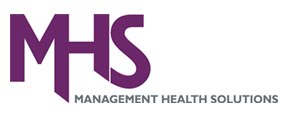The U.S. Supreme Court’s decision on the Patient Protection
and Affordable Care Act has brought much-needed clarity to hospitals and other
healthcare providers. With the uncertainty gone, providers can now fully assess
and plan for the Affordable Care Act’s (ACA) effect on revenue cycle management
(RCM).
Virtually every aspect of the ACA affects RCM, including:
Funding Cutbacks: The ACA calls for dramatic funding and
reimbursement reductions, including more than $700 billion in future Medicare
spending. For non-profit hospitals, Medicare reimbursements will be reduced
over 10 years by more than $150 billion, and $14 billion in Medicaid
disproportionate share hospital payments will be cut, according to Moody’s
Investor Services.
Also, the Supreme Court gave states the option to accept or
reject federal money for Medicaid expansion. In some states, providers will
have to project whether their state will opt in or opt out of federal funding.
If a state chooses to forgo the expansion, a provider could still be faced with
significant numbers of uninsured patients and experience Medicaid payment
shortfalls.
In terms of RCM, these cutbacks and continued uncertainty in
some areas make it even more important to identify and maximize payments and
collections since hospitals typically operate on a 1-3 percent bottom line
margin. Any cutbacks in reimbursement will have a definite negative effect to
the bottom line and could quite possibly make the difference between continuing
to serve the local community and closing their doors, especially for rural
facilities. Typically in order to add one point to the bottom line margin,
there needs to be a 10 percent reduction in costs to the top line. With
decreasing reimbursements, this makes managing such cost cutting measures even
more difficult. It also makes being competitive in the market place that much
more important.
New Quality-Care Programs, Reimbursement and Incentive
Models: With the goal of providing better care at lower cost, the ACA includes
pilot or expanded programs to test different models. The Center for Medicaid
and Medicare Services’ value-based purchasing program, for example, provides
incentive payments to hospitals that meet or exceed certain performance
benchmarks set by CMS. Other programs include bundled payments and shared
savings initiatives.
In terms of the effect on RCM, all of these programs require
comprehensive reporting, including the collection of significant data about
clinical outcomes, detailed billing and reimbursement records, and compliance
information.
In addition to meeting requirements, more robust RCM systems
can also provide valuable insights into costs and help identify areas for
improvement. If a hospital is penalized, for instance, for an unusually high
rate of readmissions or hospital-acquired infections, it can mine its data to
identify root causes and trouble spots, and devise solutions.
Compliance, Oversight and Enforcement: Much of the ACA
changes involve compliance with new criteria, such as medical necessity
standards. Similar to the outcomes-based programs mentioned earlier, RCM
systems must have the capacity to collect and integrate clinical and other
types of information.
Along with new compliance standards, the ACA also has an
oversight and enforcement component. The Recovery Audit Contractor (RAC)
program is designed to root out fraud, waste and abuse. Documentation practices
will be put under a microscope, necessitating RCM systems with tight controls,
access and audit capabilities. These advanced systems can also help identify
areas with recurring errors or other issues.
Huge Influx of New Patients and Data: Once coverage for the
uninsured begins to expand in 2014, providers are likely to see an
unprecedented increase in demand. RCM systems will have to capture and analyze
a tremendous amount of new information, including: insurance eligibility and
authorizations for Medicare, Medicaid and private insurance; coding; medical
outcomes; compliance with clinical standards; payment and reimbursement
requirements; doctor payments; and claims, billing, payment and collections
data.
Increasingly, RCM systems will also have to function as
interactive patient portals.
Looking Ahead
As providers determine the best strategy to meet broad new
requirements, they may choose to update, modify, replace or outsource RCM
systems. With the cost and complexity of RCM, outsourcing will play a more
central role, enabling providers to minimize upfront investment costs, increase
agility and flexibility, reduce the need for training and hiring, and provide ongoing
savings.
Many providers have found that the bottom-line effect of
outsourcing is significant. One large RCM provider that works for providers on
a gain share basis, which is similar to a contingency fee arrangement, achieved
a 400 to 600 basis point improvement in margins for its hospital clients,
effectively doubling operating margins.
The ACA has dramatically changed the operating environment
for healthcare providers. One of the most important tools they can put in place
to help adjust to and benefit from the law is a multi-faceted RCM system. While
the changes under way are challenging, they also offer a rich opportunity for
healthcare providers to use RCM to make their facilities run more efficiently
and cost-effectively and provide higher-quality care to patients.
Source: healthcarefinancenews
